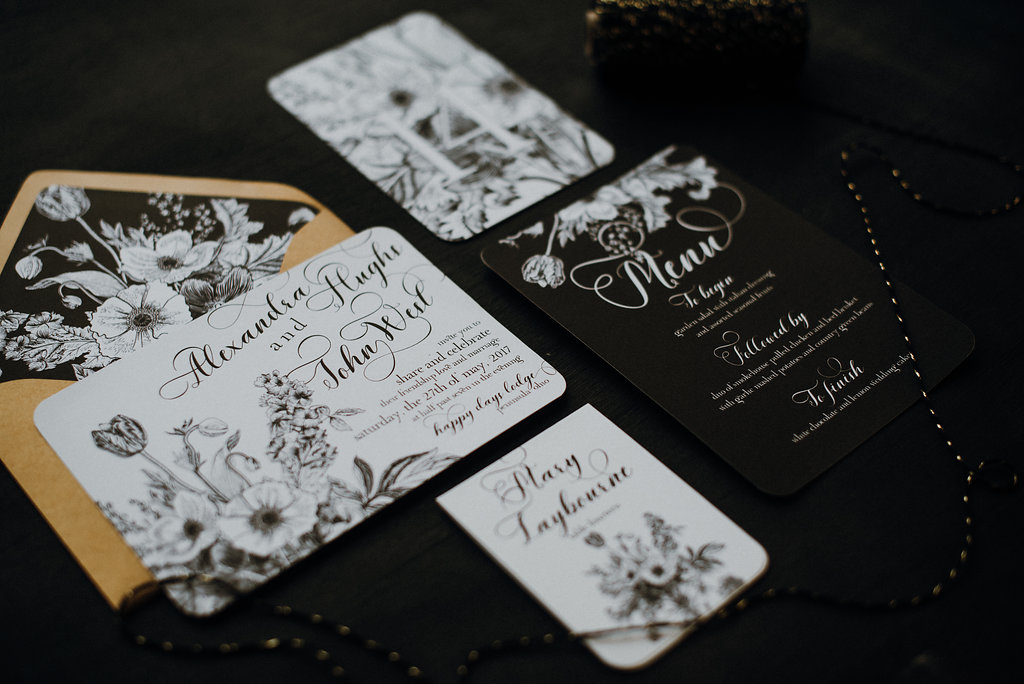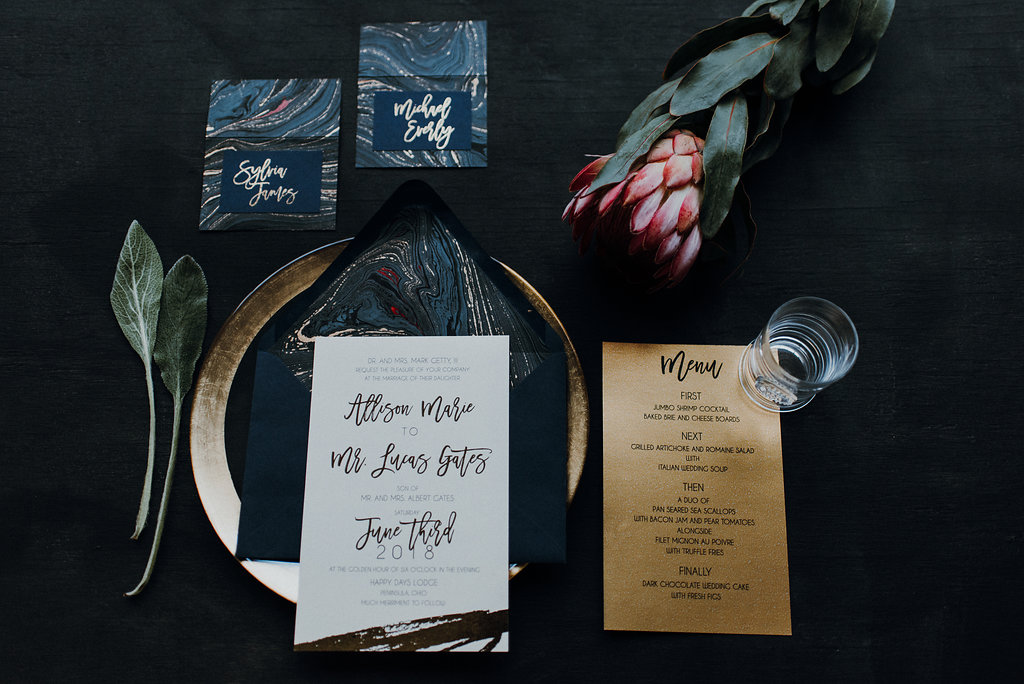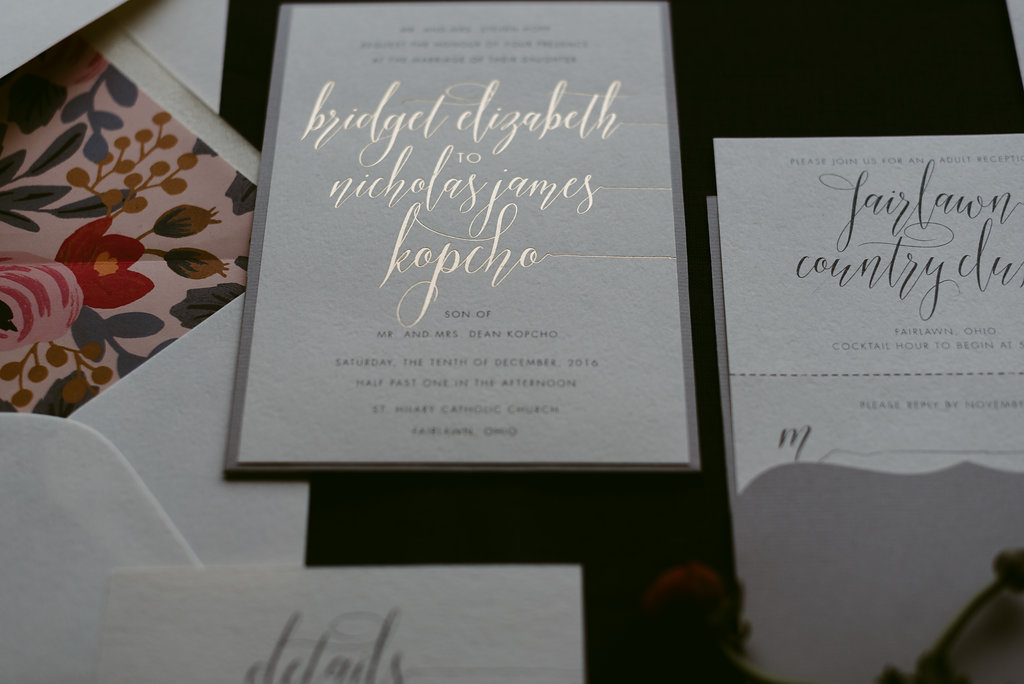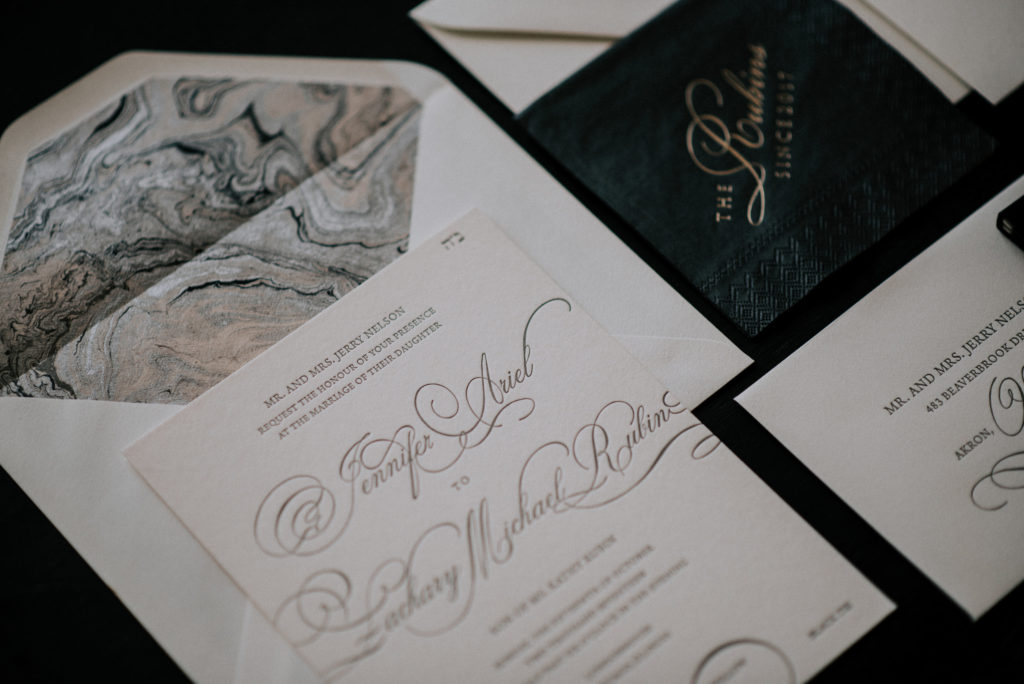Wedding Invitation Etiquette
You’ve chosen the perfect venue. You’ve narrowed down your guest list. The wedding day is approaching! Now it’s time to communicate with your guests. But how far in advance should you mail your invitations? How can you tactfully communicate your expectations around plus-ones, and wedding attire? We teamed up with Liz at Lovely Somethings for her expert opinion on wedding invitation etiquette.
When should you mail your invitations? How far in advance should you request RSVPs?
The industry tells couples to mail their invitations six to eight weeks before the wedding. But I advise my clients to have their invitations in the mail no later than eight weeks before the wedding. That is a full two months in advance of the event. If there are a lot of out of town guests, then I recommend mailing even earlier than eight weeks! The Post Office is often the biggest hurdle, so it’s always better to give your pretty paper a little more time to arrive, rather than not enough.
One of the reasons I recommend mailing earlier rather than later is that you’ll want to give guests enough time to consider their schedules and travel arrangements. The earlier you mail, the more time you’re giving them in advance of the RVSP deadline, which is typically no later than one month before the wedding.
Regardless of how wonderful your guests are, you will inevitably still have to call some who don’t reply, or if reply envelopes/postcards get lost in the mail, and ultimately your final guest count is important to so many of your other vendors. You’ll need to give that count to your planner, florist, venue, caterer, and especially your stationer so that they can create your seating chart, personalized menus, and more. So the earlier you have the guest count finalized, the earlier you can make those final preparations for your day.
How and where should you address gifts and registries?
Generally speaking, it’s not appropriate to address gifts or registries on your wedding invitations. While most guests will bring a gift, it’s improper to assume that (at least on paper). Traditionally, guests will ask your parents if and where you are registered. But the best place to list this information is on your wedding website which should be the primary reference point for wedding-related information, and will likely be used by those who plan your shower.
How should we communicate whether plus-ones are allowed? How should we communicate whether kids are invited to attend (or not)?
The way you address the envelopes (both outer and inner, if using inner envelopes) should indicate exactly who is invited to the wedding. If plus-ones are allowed, using “and guest” will communicate that, otherwise only list the invited guest’s name. If you address the envelopes to Tom & Mary without listing their children’s names or including “and family,” that should tell them that anyone beyond the two listed guests are not invited.
If you’re concerned that they might not understand, or that they might ignore it, you could tastefully include a line on the invitation. Something like “an adult reception will be held at…” is a great way to more overtly, yet still tactfully, communicate your intentions. Again, your website is also another opportunity to spell this out more clearly.
If you’re really concerned about how many people your guests might bring, on the RSVP card, a line could be included that reads: “__# seats have been reserved in your honor” that you would fill in for each person before mailing the invitations.
How should we let our guest know the dress code and level of formality for our wedding?
I always recommend to my clients that simple is better with the amount of wording you use. Traditional wedding attire is “cocktail attire,” which is nice dresses for women and suits for men, or however you identify. If this is what you’d like at your wedding, it’s not necessary to put anything on your invitations addressing attire.
I usually only suggest including attire down on paper if you’d prefer “black tie/black tie optional” or something really casual like “beach chic.” Another option is to reserve more specific direction regarding attire for your website, such as ladies: cocktail dresses, men: suit and tie. If you’re worried about people coming under or overdressed, we can come up with creative solutions but the reality is, they will probably be themselves no matter what you say, so don’t clutter your invitations with things that aren’t beautiful and you!
Gallery above is a collection of work by Lovely Somethings.
Photography by: Suzuran Photography
About Lovely Somethings
Lovely Somethings is an award-winning wedding invitation design studio and stationery boutique in Bath, Ohio. Lovely Something represents internationally renowned collections including Bella Figura, Smitten on Paper, Vera Wang and William Arthur, but the bespoke invitation designs of owner Liz Scott are the studio’s signature. Liz is able to bring couples’ visions to life through custom watercolor crests, venue illustrations and more in bold and unique ways, or totally traditional if that’s your thing. To see samples and book a consultation, visit: lovelysomethingsweddings.com.






